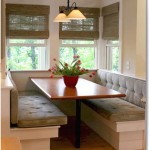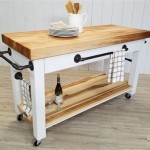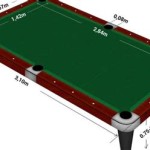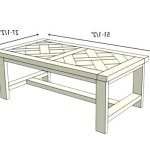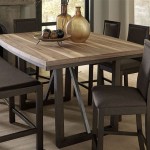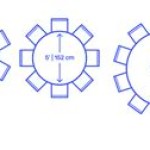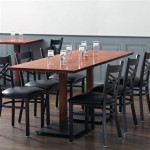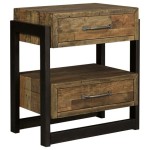Round Table for 8: A Comprehensive Guide to Size, Style, and Functionality
Selecting the appropriate furniture for a dining or conference space requires careful consideration of several factors. One of the most important aspects is determining the correct size, particularly when planning seating arrangements. A round table designed to comfortably accommodate eight individuals presents a unique set of parameters that must be understood to ensure optimal functionality and aesthetic appeal. This article provides a comprehensive overview of round tables for eight, exploring various size considerations, style options, and practical applications.
The popularity of round tables stems from their inherent ability to foster inclusivity and encourage conversation. Unlike rectangular tables, which can create a sense of hierarchy, round tables promote equal visibility and accessibility for all seated participants. This makes them particularly well-suited for both formal dining environments and collaborative work settings. However, to effectively utilize a round table for eight, understanding the nuances of sizing and space planning is crucial.
Determining the Ideal Diameter for a Round Table for Eight
The diameter of a round table directly correlates to the comfort and functionality it provides for the intended number of occupants. While a smaller diameter might visually appear more compact, it can quickly lead to discomfort and restricted movement for those seated. Conversely, an excessively large diameter could create an impractical stretching distance for reaching central items and potentially consume excessive floor space. The general consensus among furniture designers and space planners suggests that a round table designed to comfortably seat eight adults should have a diameter ranging from 60 to 72 inches (152 to 183 centimeters).
A diameter of 60 inches represents the minimum acceptable size. While it can accommodate eight people, it might feel somewhat cramped, especially if larger dinnerware or serving dishes are present. This size is perhaps more suitable for casual dining or spaces where maximizing floor space is paramount. A diameter of 72 inches offers a significantly more comfortable experience, providing ample personal space and allowing for easier access to the table's center. This size is generally preferred for more formal dining settings or conference rooms where extended periods of seated activity are anticipated.
Beyond these general guidelines, individual preferences and the specific context of use can further influence the ideal diameter. For instance, if the table is primarily used for formal dinner parties with multiple courses and elaborate place settings, a diameter closer to 72 inches is highly recommended. Conversely, if the table is primarily used for casual family meals or informal meetings with minimal paperwork or dining implements, a diameter closer to 60 inches might suffice. It is also important to consider the physical size of the individuals who will be using the table. If the occupants are generally larger in stature, opting for a larger diameter will ensure greater comfort and prevent accidental bumping or crowding.
Before making a final decision, it is highly advisable to physically measure the intended space and visualize the table in situ. Using masking tape to outline the proposed diameter on the floor can provide a valuable visual aid in assessing the table's proportionate fit within the room. This simple exercise can help avoid the disappointment of purchasing a table that ultimately feels too large or too small for the designated area.
Exploring the Diverse Styles and Materials Available
Once the ideal diameter has been determined, the next step involves exploring the diverse array of styles and materials available for round tables for eight. The aesthetic choices are vast, ranging from classic and traditional designs to contemporary and minimalist interpretations. The material selection also plays a crucial role in determining the table's overall appearance, durability, and maintenance requirements.
For those seeking a traditional aesthetic, solid wood tables crafted from materials such as oak, mahogany, or walnut are excellent choices. These hardwoods offer exceptional durability and a timeless elegance that complements a wide range of interior decor styles. Traditional round tables often feature ornate carvings, turned legs, and rich finishes that evoke a sense of sophistication and formality. These tables are particularly well-suited for formal dining rooms or executive conference rooms.
In contrast, contemporary round tables often embrace clean lines, minimalist silhouettes, and modern materials such as glass, metal, and engineered wood. These tables tend to prioritize functionality and simplicity, making them ideal for modern homes or office spaces. Glass-topped tables offer a sleek and airy aesthetic, while metal bases provide a durable and stylish foundation. Engineered wood, such as MDF or particleboard, offers a more affordable alternative to solid wood while still providing a smooth and consistent surface for a variety of finishes.
The choice of table base is another important stylistic consideration. Pedestal bases, which feature a single central support, offer a clean and unobstructed look while also maximizing legroom. Four-legged tables, on the other hand, provide greater stability and a more traditional appearance. The style and material of the table base should complement the tabletop material and overall design aesthetic. For example, a glass-topped table might be paired with a sleek chrome pedestal base, while a solid wood table might be paired with turned wooden legs.
In addition to traditional and contemporary styles, there are also a variety of more specialized options available. Farmhouse-style round tables, characterized by their rustic charm and distressed finishes, are popular choices for creating a warm and inviting atmosphere. Industrial-style round tables, featuring metal frames and reclaimed wood tops, offer a more edgy and utilitarian aesthetic. The possibilities are virtually limitless, allowing buyers to find a round table that perfectly matches their individual style and decor preferences.
Considering Practical Applications and Space Planning
Beyond size and style, the practical application of the round table and the surrounding space also need careful consideration. Factors such as the room's size and shape, the existing furniture arrangement, and the intended use of the table will all influence the optimal placement and configuration.
First and foremost, it is crucial to ensure adequate clearance around the table. A general rule of thumb is to allow at least 36 inches (91 centimeters) of space between the edge of the table and any walls or other furniture. This allows for comfortable movement around the table and ensures that seated individuals can easily pull out their chairs without obstruction. In smaller spaces, compromising slightly on this clearance may be necessary, but it is important to prioritize accessibility and avoid creating a cramped or claustrophobic atmosphere.
The shape of the room also plays a role in determining the optimal placement of the round table. In square rooms, a round table can be centered to create a sense of balance and symmetry. In rectangular rooms, the table can be placed off-center to create visual interest and break up the long, narrow space. It is also important to consider the placement of other furniture in the room, such as chairs, sideboards, and display cabinets. The goal is to create a cohesive and harmonious arrangement that maximizes both functionality and aesthetic appeal.
The intended use of the table will also influence space planning decisions. If the table is primarily used for dining, consider the placement of serving areas, such as buffets or sideboards. These should be located within easy reach of the table but should not obstruct traffic flow. If the table is primarily used for meetings or conferences, consider the placement of presentation equipment, such as projectors or screens. These should be positioned in a way that is easily visible to all participants and does not create a glare or obstruction.
Finally, it is important to consider the lighting in the room. A well-lit table is essential for both dining and working. A chandelier or pendant light suspended directly above the table can provide ample illumination and create a focal point in the room. Additional lighting, such as sconces or table lamps, can be used to create ambient lighting and highlight specific features of the room. The lighting should be carefully coordinated with the overall design aesthetic to create a cohesive and inviting atmosphere.
By carefully considering these factors, it is possible to select a round table for eight that not only meets functional requirements but also enhances the overall aesthetic appeal of the space. The key is to prioritize comfort, accessibility, and visual harmony to create a dining or conference area that is both practical and inviting.

Round Dining Tables Connecticut In Style Table Dimensions Sizes 8 Person

Circular Tables Are Space Efficient Designed With A Variety Of Common Diameters Small Roun Round Dining Room Table Sizes

Dining Table Dimensions Measurements

Havana 8 Seat Set With 170cm Round Table Light Grey Rathwood

Image Result For Round Dining Table 6 Dimensions Sizes 8 Person

Dining Table Size

Creative 8 Person Dining Table Size For Your Eoyment

Blog

100 Round Table Seats 8 Diameter Cool Apartment Furniture Check More At Http Livelylighting Dining Sizes Dimensions Kitchen

Round Table Seating Guide Diy Kitchen Dining Room

